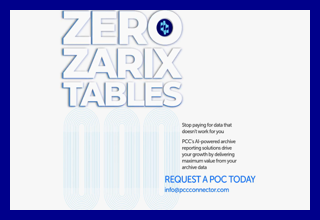Pandemic-related supply chain disruptions have caught the attention of C-suite executives. Leadership now recognizes the importance of supply chain resiliency and prioritizes and invests in strategies to improve supply chain agility. Resilient supply chains not only mitigate or manage supply chain risks and disruptions efficiently, but they also improve customer service. However, the capabilities needed for building resilient supply chains are wide-ranging and must offer end-to-end real-time visibility and real-time planning and executing abilities. Analytics and automation are two prominent techniques that organizations use for developing supply chain resiliency. SAPinsider’s September 2022 research report
Process Automation in Supply Chain highlighted that organizations view analytics and automation as foundational to building resilient supply chains. To gather more insights into how organizations can build supply chain resiliency, SAPinsider recently spoke with Samuel Gosling, a product manager with
insightsoftware,a global provider of reporting, analytics, and performance management solutions. Gosling shared real-world examples of how organizations leverage products and solutions from
insightsoftware to help in their digital transformation journey.
Bridging the Gap Between Planning and Action
Supply chain resiliency allows organizations to anticipate risks and disruptions before they occur. But identifying potential risks in advance is only possible by developing visibility into the supply chain and translating that visibility or data into meaningful insights. However, insights alone are not of any value unless they are used in real-time. Organizations must focus on minimizing the gap between planning and action, which is possible by integrating analytics with automation. As Gosline highlighted: "Ultimately, we enable our customers to swiftly close the feedback loop between planning and execution. Organizations use our analytical tools to identify when reality deviates from the plan, whether that be supply disruptions, production delays or changing demand patterns, or what have you. Our automation suite helps close those gaps in near real-time by automating ERP system changes to reflect the new status quo. Closing this feedback loop is critical for supply chain resiliency."
Data drives supply chain planning. Therefore, the quality of plans corresponds to the quality or accuracy of the data leveraged. When data quality determines output quality, organizations must identify and fix data quality and accuracy issues to generate meaningful and timely insights. This is popularly known as garbage in, garbage out (GIGO). However, the challenge in procuring quality data is twofold. , not all data issues are apparent and in plain sight; second, data quality management is difficult to achieve due to overwhelming data volume and transactions. Therefore, developing a process that solves both challenges is critical. This can be done by linking analytics with automation, which can help in quality data processing and insights. This then helps build foundational capabilities required for supply chain resiliency. Gosling emphasized: "To overcome the complexity of today’s supply chains, companies are increasingly offloading critical supply chain processes to ERP systems to manage. What many companies fail to implement, though, are processed to manage the accuracy and quality of the data driving those ERP system-run processes. This ultimately leads to supply and demand imbalances, causing, among other things, polluted orders, dead stock, late deliveries, and poor customer service. In short, too much of some products and too few of others."
Gosling describes a real-world supply chain risk scenario that organizations are susceptible to because of data inaccuracies to emphasize the criticality of supply chain resiliency. An organization leveraging insightsoftware’s Angles for SAP analytics products identified an issue with the manufacturing lead times for specific SKUs. It was determined that the lead times in the system were significantly less than the actual. Analytics and visuals generated by the software allowed the end-user to visualize the system fulfillment cycle time against the actual fulfillment cycle time and generate insights. Since the lead times in the system were significantly less than the actual lead times, the system-generated fulfillment dates were not met. This supply chain risk scenario of late fulfillment resulted in poor customer experience and dissatisfaction.
SAPinsider’s July 2022 research report
Supply Chain Planning in The Cloud highlighted that customer experience is one of the most important drivers for transforming a portfolio of supply chain tools and technologies. Any data inaccuracy issue exposes an organization to customer experience risk. In the above case, analytics and automation combination was used to eliminate risk and develop resiliency. Angles helped identify and mitigate data inaccuracy risk as the customer could determine realistic SKU lead times by leveraging analytics. However, the next challenge was executing and propagating the changes into data. Process Runner, insightsoftware’s Excel-based automation add-in, helped the customer bridge the gap between Angles’ analytics insights and SAP ERP execution. The automation add-in helped the customer automate many records while reducing time and mitigating errors. The process ensured that analytics-generated insights were instantly translated into action. Gosling highlighted: "The combination of analytics and automation to improve supply chain resiliency is a no-brainer. I am glad to see an increasing number of companies adopting such practices. Investing the time to build out automated analytics and process automation will free up the time of operations-critical human resources. They will only have to intervene for cases that fall outside the norm, as they’ve built in checks and balances to manage the day-to-day insights to actions, allowing them to focus more of their time on higher value-adding tasks."
What Does This Mean for SAPinsiders?
Bridging the gap between insights and action can have a transformative impact on your supply chain. As you envision capabilities to bridge that gap, you need to be aware of some critical issues:
- Build Robust Data Foundation: Today’s supply chains are planned based on the data that feeds into analytics and planning systems. Data quality issues open doors to supply chain risks like the one discussed in this article. Every supply chain organization needs an effective supply chain data management strategy.
- Minimize Execution Latency: The lag between analytics and execution often leads to planning challenges or supply chain issues. In many cases, lack of return on analytics initiatives results from delays in the execution of the insights from analytics or planning tools. Whether enriching or updating data like the above case study or making changes to a specific process, guidelines must be in place to effectively translate insights into action.
- Invest in Aligned Technologies: Siloedpoint systems add to the complexities that make your supply chain prone to failures. Look for aligned technologies that combine powerful capabilities, like analytics and automation, to leverage your supply chain. These can help build unified data, analytics, and planning capabilities, which is the future of supply chain technology.






